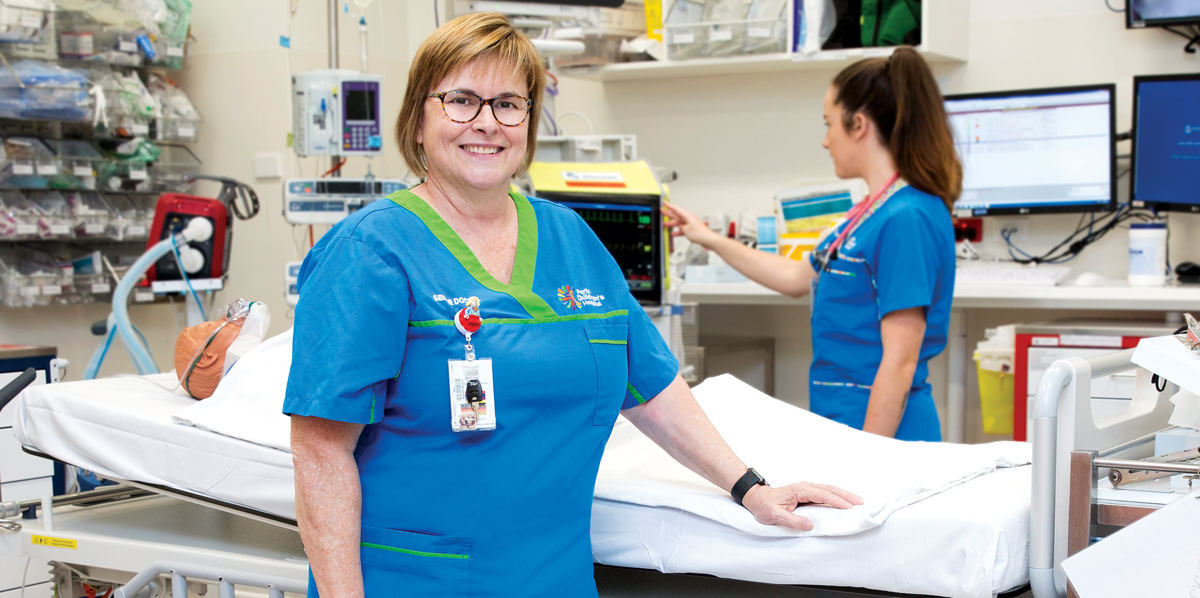
Updated guidelines aim to improve the management of paediatric head injuries, as Dr Karl Gruber (PhD) reports.
Imagine this scenario: an 18-month-old girl presents to an emergency department after falling from a high-chair and landing on her head. The child cried and vomited four times between the time of the fall and arriving at the ED. Otherwise, she is behaving normally, and no other clinical concerns are observed.
As an ED doctor attending this child, what step would you take next?
It all depends on the year. Before 2021, the standard guidelines would have required the child to receive a CT scan to ensure there was no swelling or bleeding in the brain or a fracture of the skull. This year, with the new guidelines in place, the child would have gone home without a CT scan.
This scenario was an actual patient case.
“The guidelines assisted the doctor to determine that she did not have any significant concerning features of head injury and that vomiting by itself in children less than two years was not a risk factor,” Prof Meredith Borland, Emergency Physician and Director of Emergency Research at Perth Children’s Hospital, told Medical Forum.
“She had a period of structured observation over a few hours until she was back to her normal self for one hour. There was luckily no need for her to have a CT scan or admission. She ran out of the department chewing on a biscuit.”
Consensus all round
The new guidelines, formally endorsed by the RACGP, are the product of a collaboration between emergency physicians, GPs, neurosurgeons, radiologists, paramedics, nurses and other health care providers from Australia and New Zealand. Perth Children’s Hospital ED staff were also closely involved in the development of these guidelines.
The overarching goal is to improve the consistency and quality of head injury management across Australia and New Zealand.
Another key aspect of the new guidelines is that they are built on up-to-date evidence from clinical studies and aim to give patients the best possible health outcomes.
According to Prof Borland, other key objectives of these new guidelines are to:
- improve outcomes for children with mild to moderate head injury;
- identify those children who need neurosurgery and/or intensive care;
- promote consistency of management in EDs in Australia and NZ;
- reduce unnecessary interventions, including inappropriate use of head CT scans in children at very low risk of intracranial injury and
- improve guidance for discharge and follow-up.
For the case describe above, the new guidelines cover various scenarios to help clinicians make a decision about administering a CT scan or sending the child home after observation. Some of the new guidelines that are now in place are:
- Children presenting to an acute care setting within 24 hours of a head injury and with a GCS score of 15, a head CT scan should not be performed without any risk factors for clinically-important traumatic brain injury.
- Children presenting to an acute care setting within 72 hours of a head injury and a GCS score of 13 or less should undergo an immediate head CT scan.
- Children with delayed initial presentation (24–72 hours after head injury) and a GCS score of 15 should be risk stratified in the same way as children presenting within 24 hours.
- In children with mild to moderate head injury, consider shared decision-making with parents, caregivers and adolescents (e.g. a head CT scan or structured observation).
- All cases of head injured infants aged six months and younger should be discussed with a senior clinician. These infants should be considered at higher risk of intracranial injury, with a lower threshold for observation or imaging.
Help for parents
Among these new recommendations and practice points, Prof Borland says that one of the most important areas covered involve the management of head injuries in children with specific health issues such as haemophilia or autism, or in children under six months of age.
“This means there is a consistent approach and where indicated a reduction in CT scanning,” she said.
Now Prof Borland and her team are working on a guide for parents, which may help them care for their children after they are discharged from the ED.
“The Head Injury Guideline group is also developing support information with advice on returning to school, sport and other activities depending on the assessment of the child’s injury,” she said.

